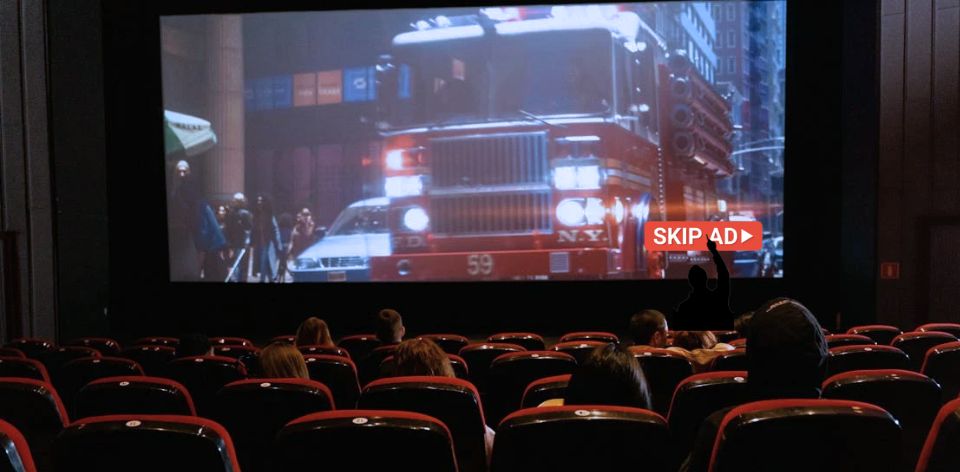Tom Hanks sits on a plane. Moments later, he’s sucked out of the aircraft. He wakes on an island, forced to survive by his wits. Time passes. He discovers fire, grows a beard, and befriends a volleyball. Eventually, he’s rescued, shaves, and catches a plane back to Helen Hunt, who embraces him in the rain. Where do you start when you have to start over? asks the on-screen text.
It sounds like a powerful setup for a film about post-trauma recovery.
Except it wasn’t the setup. It was the whole damn movie. Right down to the resolution.
The film, of course, is Robert Zemeckis’ Cast Away. And now that we’re a good 25 years on from its release, it’s probably safe to say we’re out of spoiler territory. So apologies if I gave away the ending. I’ll leave Wilson’s fate for you to discover.
DreamWorks’ baffling choice to give away the entire film in the trailer remains one of the most notorious examples of marketing spoiling a story. But it’s far from the only one. The Truman Show did the same. Blade Runner 2049 teased Harrison Ford’s return. And Batman v Superman didn’t just show Batman and Superman facing off, it gave away the Doomsday twist and Wonder Woman’s arrival.
These are just a handful, but the list goes on. Trailers are designed to explain, to hype, and to sell. Increasingly, especially with interconnected franchises, the surprise cameos, Easter eggs and straight-up plot twists are laid bare. The risk, and therefore the surprise, is taken out of the marketing. So when a five-minute sneak preview for James Gunn’s Superman dropped, I opted out. I just didn’t watch it. And that has made all the difference. But it also made me ponder why we keep watching trailers when they give away so much.
A brief history of trailers that got it right
Trailers are not a new phenomenon. The first is said to date back to 1913, when a theatre chain owner produced a short promotional film for the stage musical The Pleasure Seekers. Soon after, edited montages — more akin to modern teasers, showing only fragments of the final product — became the norm.
In 1941, studio RKO did something radically different. They had an upcoming film by Orson Welles called Citizen Kane. You may have heard of it. Like the movie itself, the trailer was unlike anything audiences had seen. Written and directed by Welles, it took the form of a pseudo-documentary about the making of the film and didn’t feature a single second of actual footage.
Welles wasn’t the first to break the mould, but it shows the extremes of what’s possible when you keep spoilers at bay. When Disney was promoting Snow White and the Seven Dwarfs (1937), the first time audiences were being asked to sit through a feature-length animation, Walt Disney himself appeared on camera to introduce figurines of the dwarfs, one by one.
Classic horror trailers perhaps do it best, with a vested interest in keeping the real frights under wraps. The Exorcist is a masterclass in minimal terror: one key image — a priest arriving at the house, framed by a single street light — followed by a staccato burst of photographic negatives revealing horrifying faces. In 1999, The Blair Witch Project leaned into the illusion that what audiences were about to see was entirely real, found footage.
And then there’s Hitchcock, who turned the trailer into an art form. The original Psycho (1960) trailer features Hitch himself guiding us through the Bates Motel, his tone dryly funny and ominous. Famously, when the shower scene is teased, it’s Vera Miles — not Janet Leigh — playing the screaming woman. One of my favourites is the teaser for The Birds (1963), where Hitchcock talks directly to camera for nearly five minutes, holding up feathers, stuffed birds, hunting equipment, and even eating a roast chicken, while innocently musing on what grievances birds might have against humankind.
The Mighty Booj and the rise of the over-explainer trailer
If you think that trailers are all kind of samey, it’s not your imagination. Trailers rarely involve the filmmakers directly anymore. In fact, almost all of them are outsourced to companies that work specifically on the trailers.
Podcast Twenty Thousand Hertz made an excellent piece called The Booj Strikes Back: Why all modern trailers sound the same, demonstrating how the same basic beats — and in particular audio cues — are in almost every major studio trailer. Really. Every. Single. One.
It’s boring at this point, as you can pinpoint the exact formula. The single note. The slow cover of a recognisable song. The “booj” sound effect. The rapid crescendo at the end.
Auralnauts capably provides a beautiful example of the formula below. In the same way that franchise films are safe places for the audience to land, these trailers are safe bets for audiences to hook onto a new or existing property.
Compare the Auralnauts trailer with the recent one for Marvel’s Thunderbolts* below.
How to avoid trailers without going off-grid
Now, don’t get me wrong. I’ve very deliberately used Thunderbolts* as it’s a film I quite enjoy. Having now seen Thunderbolts* in cinemas, in IMAX no less, I’m so pleased I skipped the trailer. It wasn’t just whole action sequences that were fresh to me — it was characters, tone, even the pacing.
I remember first turning off trailers around 2011. Long after the heyday of the 80s and 90s “voice of God” In a world… trailers (often featuring the legendary narrator Don LaFontaine), two trailers caught my attention for very different reasons. One was for X-Men: First Class. The other? The Hangover: Part II.
Both stand out as exemplars — but at opposite ends of the spectrum. The First Class trailer is filled with all the beats you’d expect. See that submarine? When I saw the movie, every time someone got near a body of water, I was waiting for the sub to come flying out of it.
On the flip side, The Hangover: Part II did exactly what you want. It had the three stars walking down the road, battered and bruised. If you’d seen the first film, you knew something had gone wrong the night before. What’s occurred? Well, you had to see the film to find out.
Cut to 2025, and a five-minute preview of James Gunn’s Superman was released online. Being a DC fan from way back, it took all my willpower to avoid it — but I really want to go in clean. Occasionally I get invited to see the first 20 minutes of a film as a media teaser. But for me, cinema is a dish best served cold. Then it’s more likely to leave you warm.
I’ve had so many great surprises thanks to skipping trailers this year already. The very premise of Companion was unknown to me before setting foot in a cinema. The twists and turns of Black Bag, or the tonal leaps of The Monkey, gut-punched me at the right time. I was one of the handful of people who didn’t know what to expect in the second half of Sinners, making it a genuine thrill so far this year.
It’s not about being precious or paranoid — it’s about protecting the experience. In a landscape where even teaser trailers stretch to three minutes and marketing departments race to reveal every plot beat, opting out has become my quiet rebellion. A chance to let a film unfold on its own terms. No spoilers. No setups. Just the joy of seeing a story reveal itself, exactly as it was meant to.
So, if you see me in a cinema with my eyes firmly affixed to the ground before the film starts, chances are I’m not prepping an article on the state of theatre carpets (although don’t rule it out). I’m averting my gaze, trying to stay blissfully ignorant.




